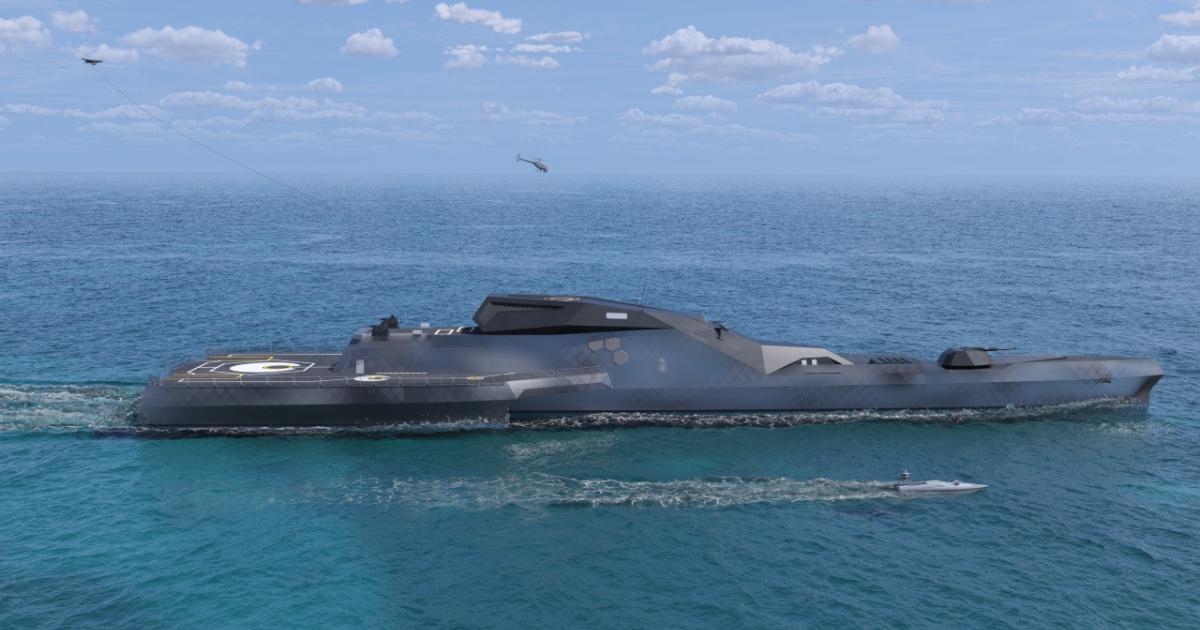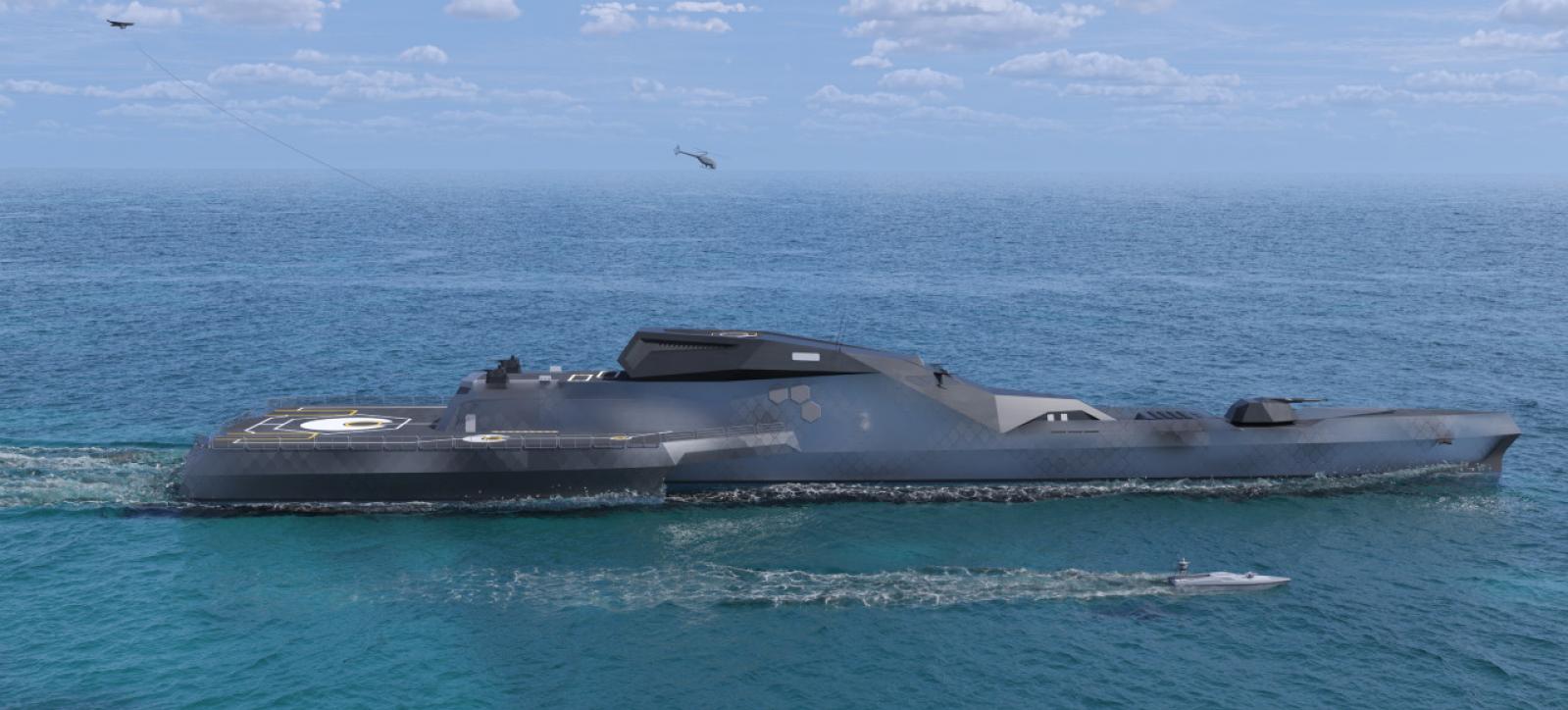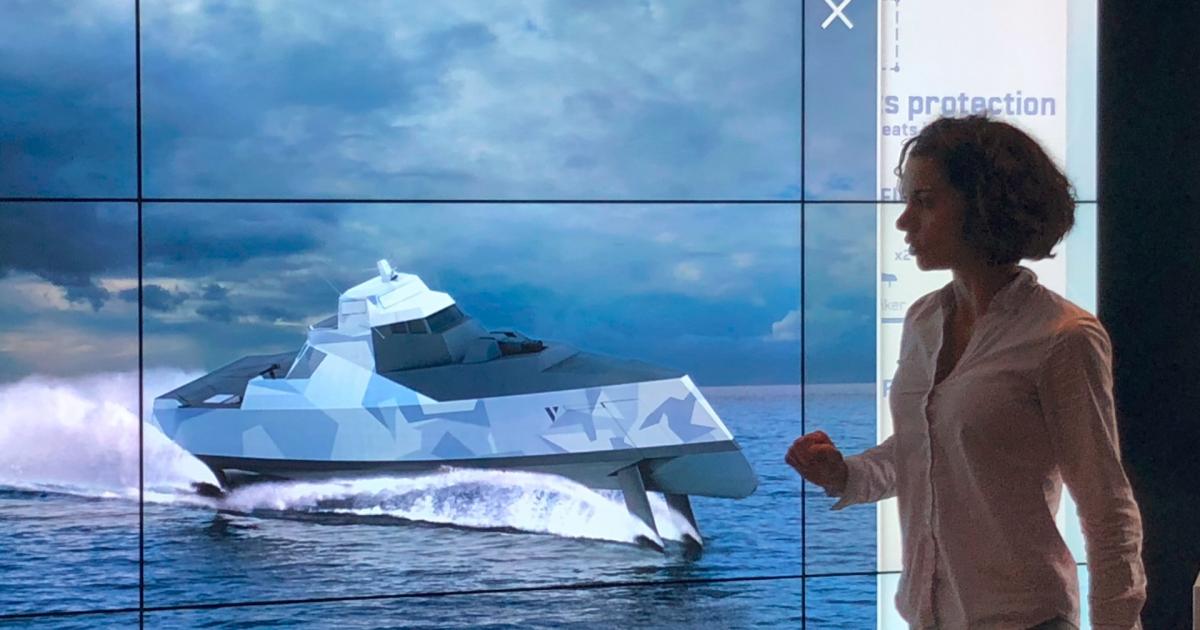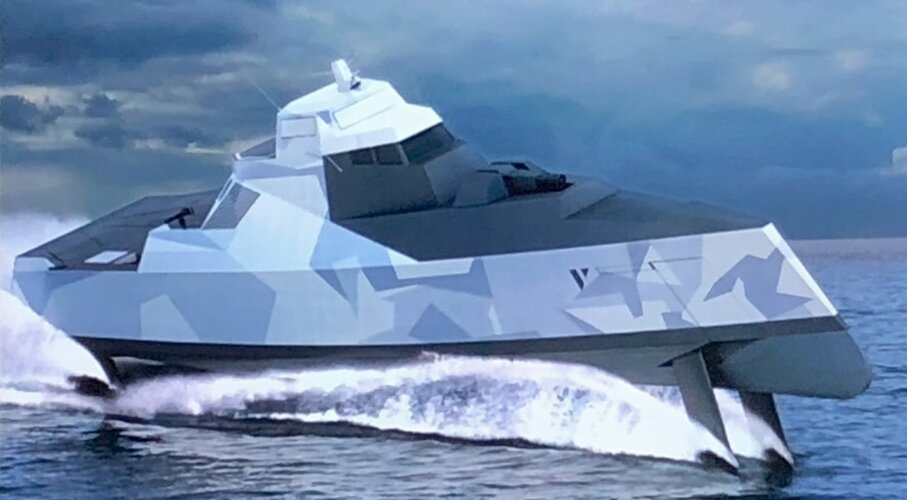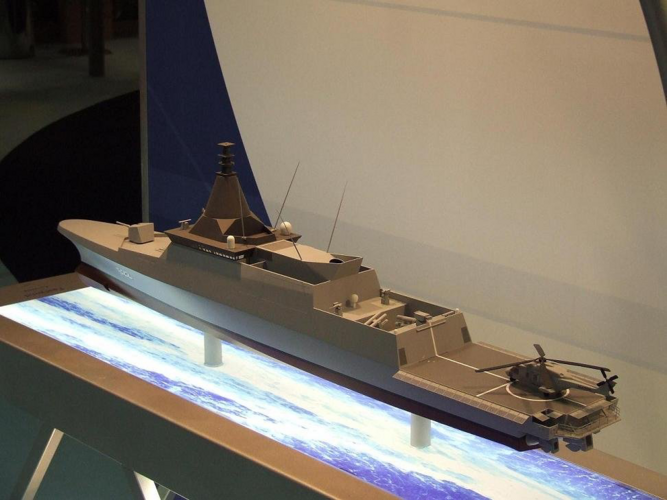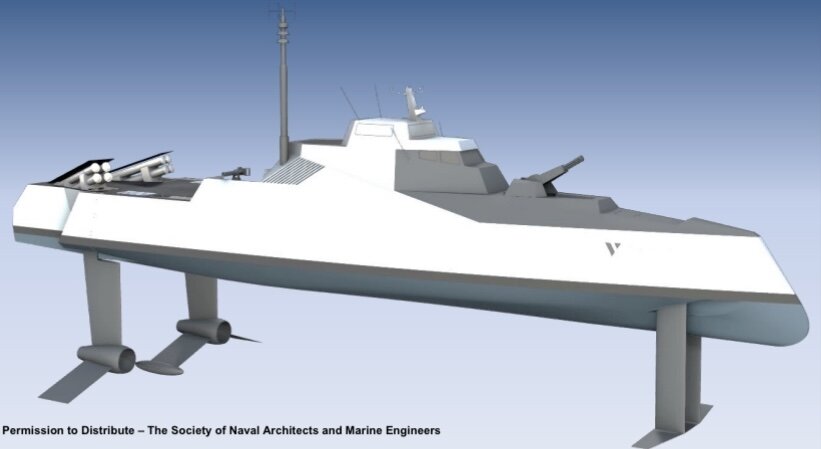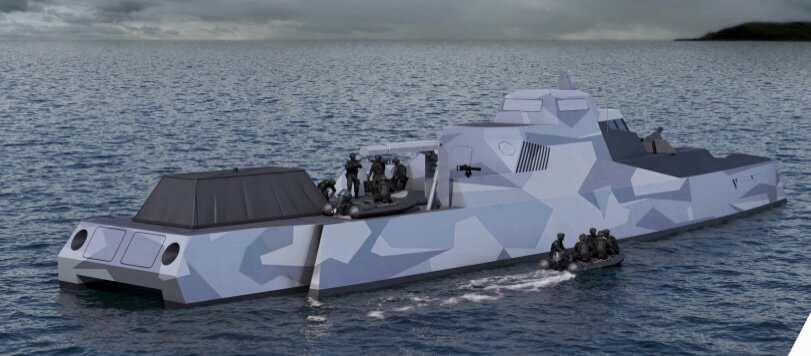That’s the Sea Striker concept. Not a lot of info except a few paragraphs… the rest is in a conference paper that I don’t have access to.
@TomS More info on the Sea Striker from the paper cited above:
Sea Striker
Displacement.....................................≈ 250t
Length................................................≈ 40m
Crew ..................................................20p
Autonomy...........................................5 days
Maximum speed ...............................> 60kts
Foilborne operational speed............. > 40kts
Hulborne economical speed ............ 12kts
Max Sea state for foil operation ........SS 4/5
Range foil borne / hull borne..............600/1800 Nq
Foils system: fully submerged sub cavitating foils
Gas turbine & waterjet propulsion
Combat system:
- Integrated missile launchers aft
- Gatling 30mm gun forward
- Integrated flat plane radar
- Integrated and innovative antenna system on her superstructure
- Foldable mast integrating various sensors, especially a passive radar, C-ESM, optronic sensor, R-ESM
- PSIM-X: an aerial captive drone able to receive several kinds of sensors: radar, radio communications, optronic, electronic warfare equipment
- Stealth (fully integrated) decoy launchers
- Anti UAV small weapon (jammer)
- Mission deck able to receive various mission packages: light weight torpedoes, ASW kit integrating active and passive buoys, Special Forces kit
- Flush deck to launch small Special Forces RHIBs
- 2 small calibre guns, hidden behind the side hull
